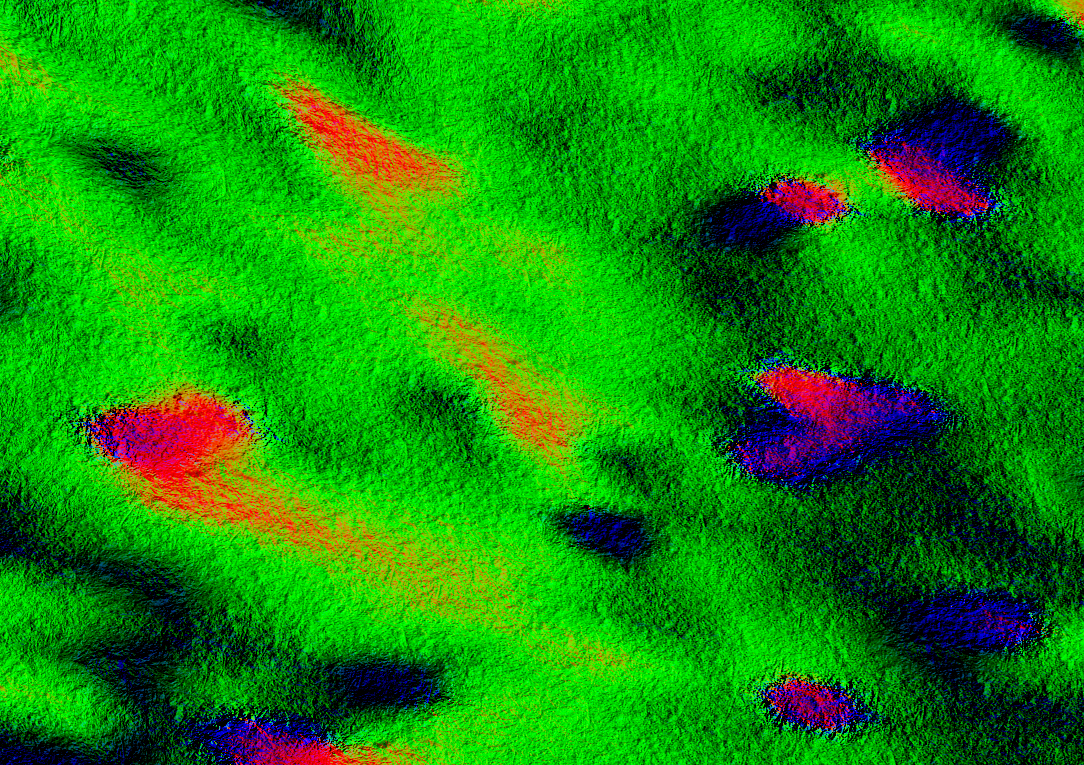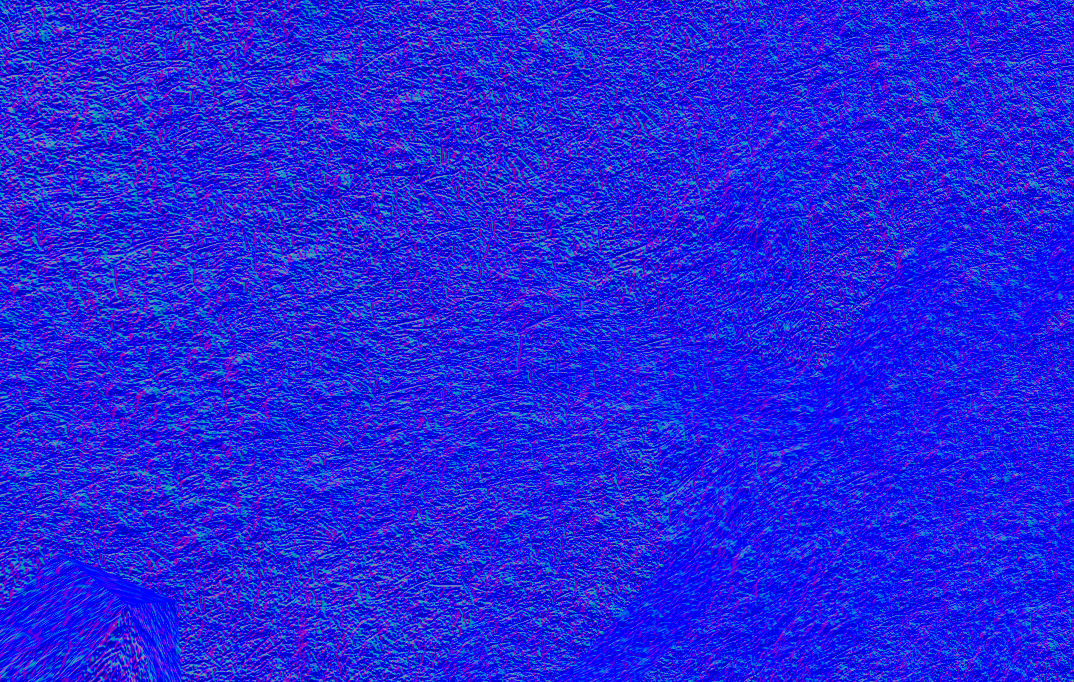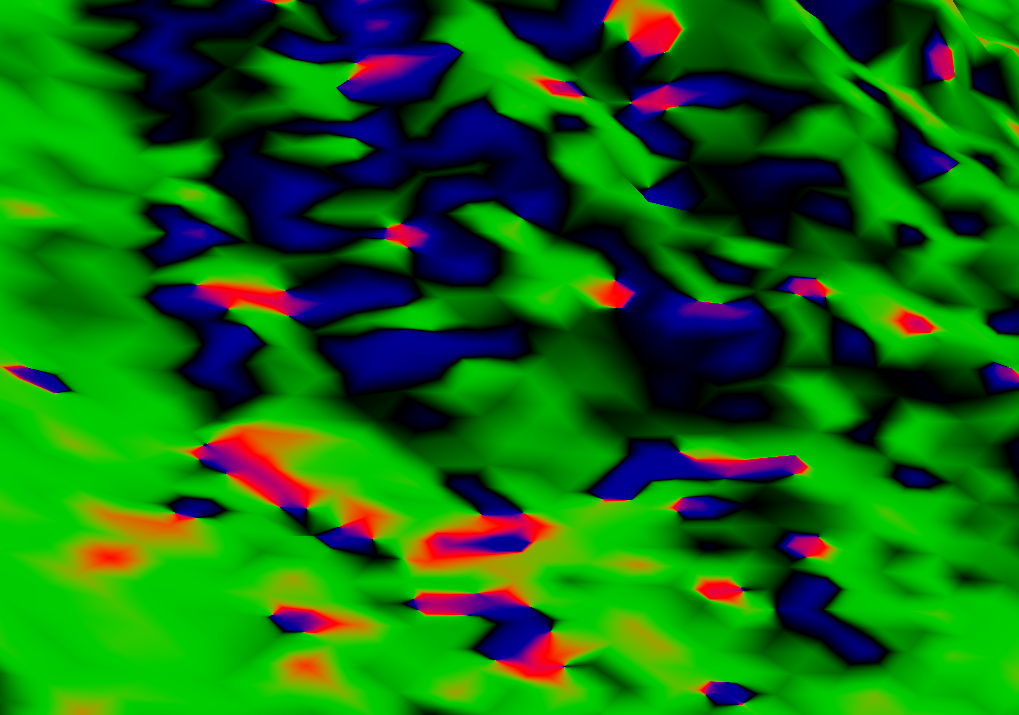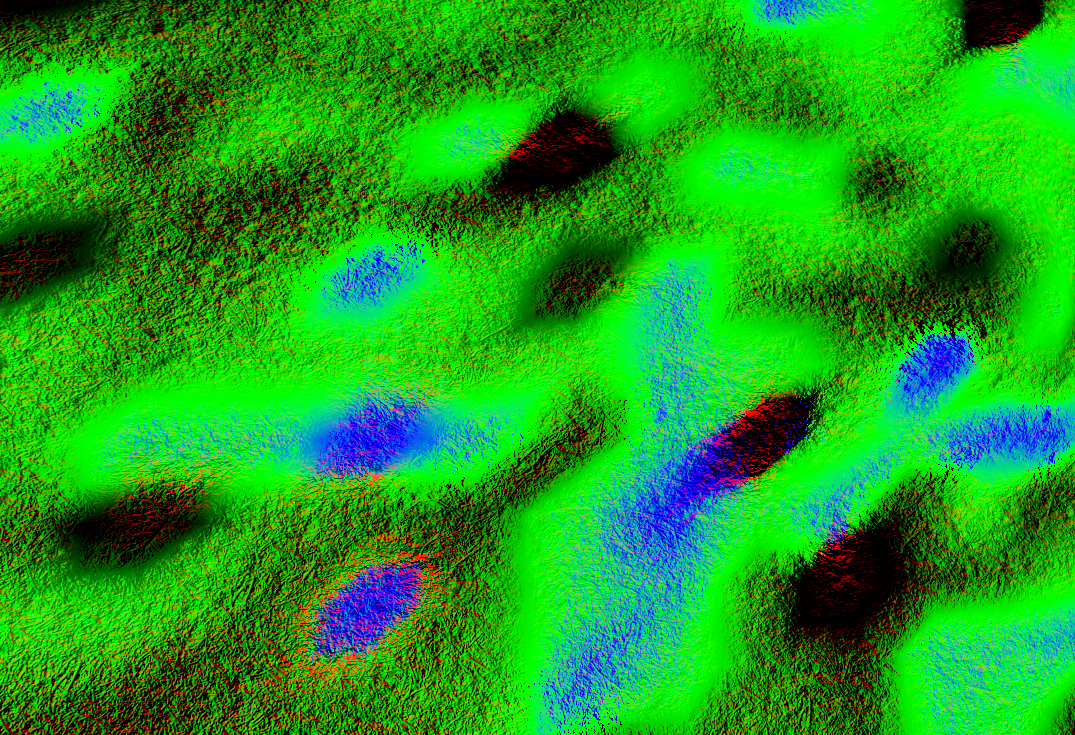I'm having an issue where my normals, after applying my TBN matrix, seem to have these weird splodges everywhere on them and I cannot seem to figure out what they or what's causing it.
I assume the issue is likely with my TBN matrix construction, though I am unsure where I might be going wrong in this.
I think the issue might be to do with my mesh normals which are calculated by sampling the values around the current pixel and estimating their differences. This normal is then transformed to view-space and used in the calculation for TBN. Though I am not entirely sure if this is the issue.
// n in this calculation is a view-space normal
// https://stackoverflow.com/a/13983431
// Collect samples around current point
float t = HeightValue(vertexUV + vec2(0.0, texelSize.y));
float b = HeightValue(vertexUV - vec2(0.0, texelSize.y));
float r = HeightValue(vertexUV + vec2(texelSize.x, 0.0));
float l = HeightValue(vertexUV - vec2(texelSize.x, 0.0));
float topLeft = HeightValue(vec2(vertexUV.x - texelSize.x, vertexUV.y + texelSize.y));
float bottomLeft = HeightValue(vec2(vertexUV.x - texelSize.x, vertexUV.y - texelSize.y));
float topRight = HeightValue(vec2(vertexUV.x + texelSize.x, vertexUV.y + texelSize.y));
float bottomRight = HeightValue(vec2(vertexUV.x + texelSize.x, vertexUV.y - texelSize.y));
// 2.0 * is used to place more weight ont the neighbour pixels than diaganol
float x = topLeft - topRight + 2.0 * (l - r) + bottomLeft - bottomRight;
float z = topLeft + 2.0 * t + topRight - bottomLeft - 2.0 * b - bottomRight;
// Normal
vec3 n = normalize(vec3(x, 2.0, z));
n = .... // convert normal to view-space
vec3 baseTangent = vec3(1,0,0);
vec3 baseBitangent = vec3(0,0,1);
vec3 tangent = normalize(baseTangent - dot(baseTangent, n) / dot(n, n) * n);
vec3 bitangent = normalize(
(baseBitangent - dot(baseBitangent, n) / dot(n, n) * n) -
dot(baseBitangent, tangent) / dot(tangent, tangent) * tangent);
TBN = mat3(tangent, bitangent, n); This is an image of what the normals look like when the TBN matrix is applied:








